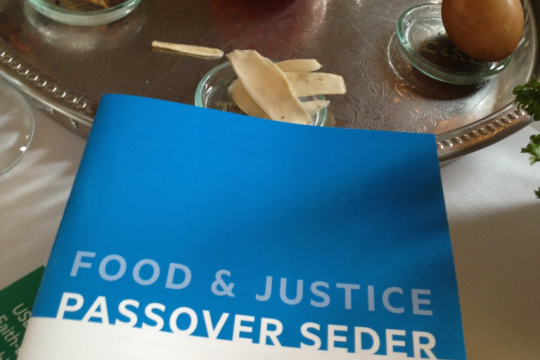The Journal of Youth Engagement is an online forum of ideas and dialogue for those committed to engaging youth in vibrant Jewish life and living. Join the discussion and become a contributor.
We are asking big questions in Boston and we are inviting, encouraging and supporting our teens to ask them with us. This spring a group of teens asked, “How might we create a meaningful spiritual experience for those coming of age?” This was not a question that was handed to them on a piece of paper; this was a question that evolved out of some very meaningful work in the Design Lab pilot.
The Design Lab is an innovative model of teen engagement that is a partnership between the URJ, Combined Jewish Philanthropies and the Brandeis University Office of High School Programs with partial funding from the Jim Joseph Foundation. It is a wonderful new example of collaboration as we all work together to engage a larger group of teens to delve more deeply into Judaism, and to support and enable them to engage their friends and be co-creators of their own meaningful Jewish experiences. It is an experiment in bringing the principles of Design Thinking to our work with teens. Design Thinking was first articulated and developed by a Silicon Valley design Firm, IDEO, as a framework to design physical objects. However, its applications are growing, and it is now being used in a number of settings as a way to design experiences of all sorts.
Design Thinking is a mode of problem solving that has several steps, including:
- Empathize/Understand/Immerse
- Frame/Define
- Ideate/Imagine
- Prototype
- Test
Related Posts
Image

Passover 2024: The Three Central Messages of Pesach
The Exodus story is the master narrative of the Jewish people. As most of us know, it tells the story of the Hebrew slaves in Egypt and the rise of Moses as their liberator. It reminds us that in 2024, the universality of Passover's three-part message again reverberates through the generations: freedom, love, and justice.
Image

Modern-Day Plagues of Injustice and Inequality
On Passover, we recount the Ten Plagues that were inflicted upon the Egyptian people. Here are some of the "plagues" and injustices that afflict our present-day society -- and actions you can take.
Image

Setting Your Leaders Up For Success
It's board nomination season again! Time to compile lists, get recommendations, and start calling the future leaders of your congregation. The URJ has resources, advice, and initiatives to set you and your board up for success.